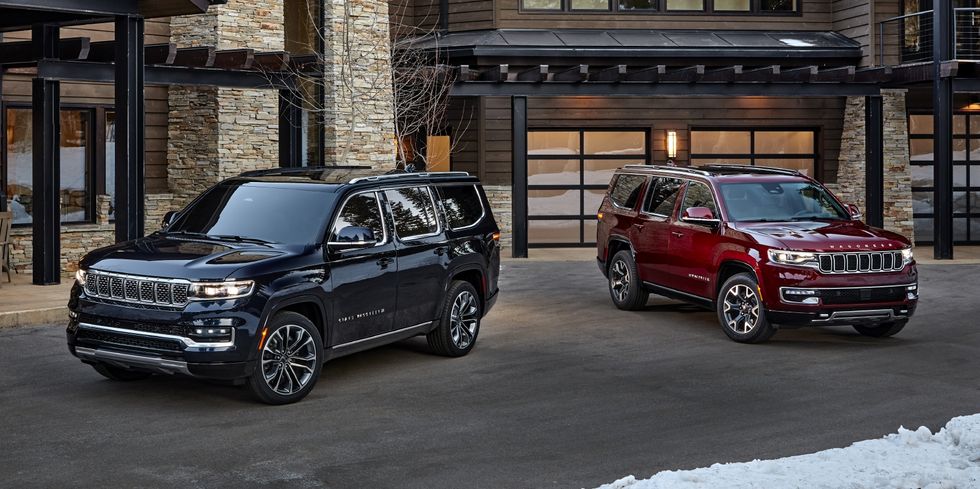The Acura NSX reappeared for its second limited-production iteration in 2016, and it made waves in the industry, even selling VIN 001 at auction for $1.2 million. The Jeep Gladiator pickup returned in 2020 after a hiatus since 1987, freshening the Jeep brand at that time. The Chevy Blazer came back into the picture, albeit nothing like the cult-classic original from 1969. Revived nameplates have been coming back in droves, and it appears to be a great move for the industry.
That rings especially true for models that target the same audience as their earlier iterations. For example, the Jeep Wagoneer and Grand Wagoneer are returning for the 2022 model year. Their purpose as stated by Jeep is to be the ideal road trip vehicle with “an incredible combination of versatile space, inviting comfort, legendary capability and confident towing”. Anyone who experienced the first generation with the power rear window will understand the feeling of a highway drive in the original Wagoneer.
The Ford Bronco does the same thing with off-road-focused groups. From its original release in 1966 until today, the passion Bronco owners have for their vehicles is unwavering. Known as one of the most durable and customizable vehicles ever, the new Bronco brings back the functionality previous owners have come to expect.
Nostalgia attracts new and old buyers
The auto industry is playing off one of the oldest and most effective sales strategies: nostalgia. In nostalgia marketing, you’re prompting previous owners to remember “the good ol’ days”, and carmakers have seemingly created a formula to make it work. But the success of 80’s-themed streaming series like Stranger Things and a clothing style resurgence reminiscent of the ’70s and ’80s attracts younger shoppers including Millennials and Gen Z buyers, and the same is true for purpose-built vehicles with a revived nameplate. The hype is understood, even if there isn’t a firsthand emotional connection.
How dealers can move on revived models
An all-new Acura Integra has just been announced and there are bound to be many more similar models coming down the pipe that share a name with one that’s been retired for decades. It presents an opportunity for dealerships to capitalize on the release, both in sales and in other ways.
Side-by-side sales
Whether the model is already released or it’s been announced for a future arrival, dealerships can use the former model as an example of how far the brand has come. Purchase and restore the older version and give it real estate in the showroom to drum up interest. When the new model is available, a side-by-side comparison can be shown. Or, better yet, create a buzz by selling or auctioning the legacy model, or create a package deal for a first-edition new model along with the older version.
Go retro in the dealership
While car owners tend to love throwbacks with new models, customers would also love to go back to a time when the service department and customer service itself were simpler. It’s an opportunity for dealerships to make a temporary or permanent shift to a retro look in certain areas, where possible. Invest in old-school technician, service advisor, and salesperson uniforms and advertise that your store has the same family-style service as “back in the day”.
Resurrecting a car nameplate can be a touchy play by carmakers, but it presents opportunities to stand out from nearby competitors. Use the momentum to your advantage wherever possible.
Did you enjoy this article from Jason Unrau? Please share your thoughts, comments, or questions regarding this topic by submitting a letter to the editor here, or connect with us at newsroom@cbtnews.com.
Be sure to follow us on Facebook and Twitter to stay up to date or catch-up on all of our podcasts on demand.
While you’re here, don’t forget to subscribe to our email newsletter for all the latest auto industry news from CBT News.










